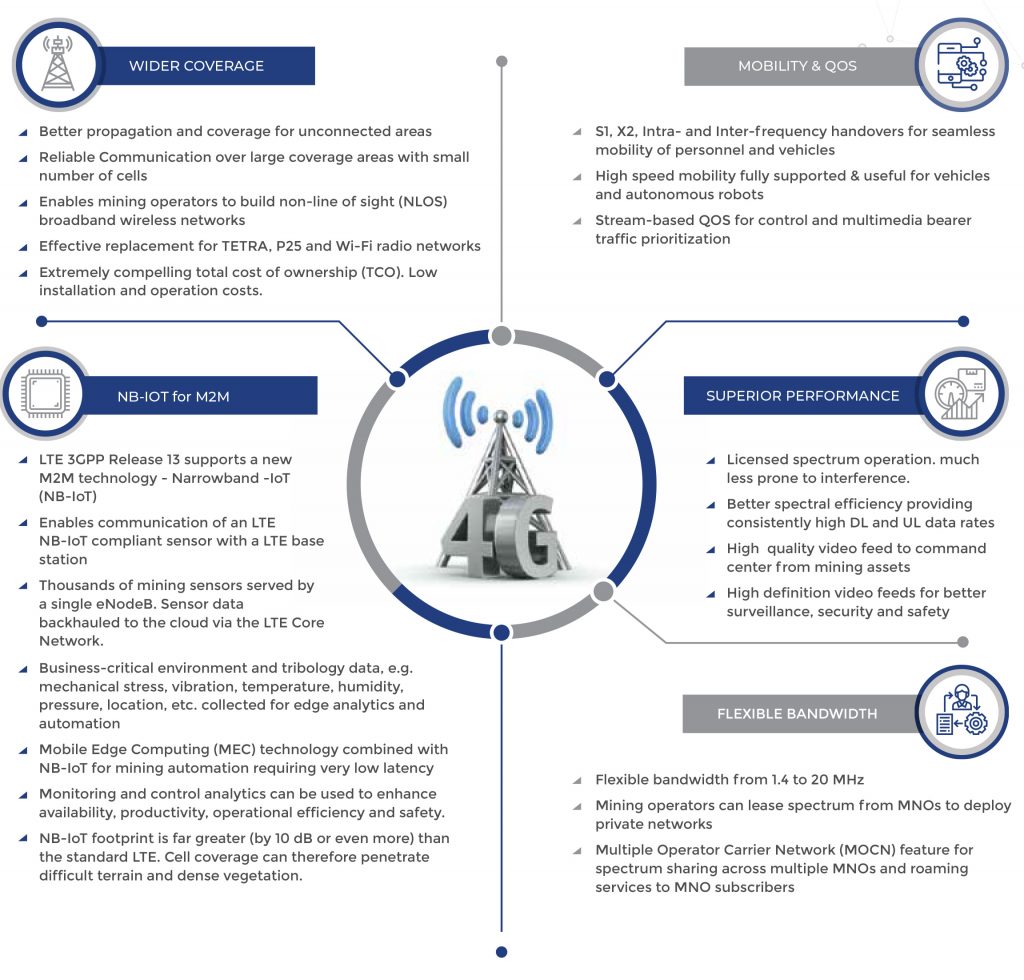POSTED BY :
Dr. Satish Ananthaiyer,
Ph.D. EVP, Business Development
With LTE addressing all the requirements, is there a need for 5G?
5G is the future 3GPP standards-based radio access technology that offers ultra-low latency, considerably higher throughput than 4G, large number of connections (e.g. large sensor networks), virtualization for cloud-based operation, and high reliability. These features can be leveraged to meet the connectivity requirements of very large mining operations that need high-precision automation with seamless cloud-based remote management.
The initial deployment of 5G in commercial networks in scheduled for the year 2020 with a follow-on deployment for private networks, such as mining. 5G can easily be commissioned as an overlay to an existing LTE network and both networks can interoperate seamlessly.
Why is LTE / 5G a must with or without Wi-Fi?
Before the emergence of LTE, Wi-Fi has been widely used as a communication technology for mines. Wi-Fi has many advantages that have made it popular for residential and enterprise applications. However, the requirements of the mining use cases pose many challenges. Specifically, the coverage area for Wi-Fi access points (even with high gain antennas) can go only up to a few hundred meters and, therefore, hundreds of access points must to be deployed and connected in a mesh constguration to cover the mining area. This means significantly higher capital and operational expenditures. Mesh topology cannot guarantee low-latency and there is signistcant variability in data rates (jitter) that can adversely affect high-precision automation. Further, in Wi-Fi, device QoS is also not guaranteed. With ongoing mining, the terrain is constantly changing, and access points have to be frequently relocated, necessitating re-planning of network routes. This involves signistcant human involvement, new investment, and also interferes with automation, impacting productivity and operational efficiency of the mine.
Wi-Fi is prone to interference and does not support seamless handover. When the mobile (e.g., feet of trucks) moves from one node (access point) to the other, there is discontinuity in coverage. Similarly, there is no continuity in Wi-Fi coverage as the fleet moves to a road head, railhead, or seaport.
The inherent advantages of LTE technology, such as high bandwidth, low latency, large coverage, mobility and support for NB-IoT make it extremely suitable for a number of mining applications. LTE can improve the effectiveness of existing applications as well as enable novel applications. LTE can enable the following applications: High Definition Surveillance, Fleet Management, Asset Tracking, Safety Systems, High-precision Machine Guidance, Predictive Maintenance, and Environment Monitoring.


